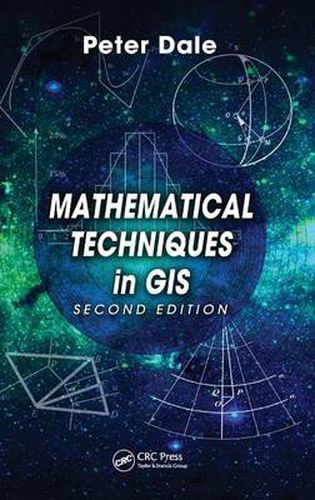Readings Newsletter
Become a Readings Member to make your shopping experience even easier.
Sign in or sign up for free!
You’re not far away from qualifying for FREE standard shipping within Australia
You’ve qualified for FREE standard shipping within Australia
The cart is loading…






The second edition of a bestseller, Mathematical Techniques in GIS demystifies the mathematics used in the manipulation of spatially related data. The author takes a step-by-step approach through the basics of arithmetic, algebra, geometry, trigonometry and calculus that underpin the management of such data. He then explores the use of matrices, determinants and vectors in the handling of geographic information so that the data may be analyzed and displayed in two-dimensional form either in the visualization of the terrain or as map projections.
See What’s New in the Second Edition:
Summaries at the end of each chapter Worked examples of techniques described Additional material on matrices and vectors Further material on map projections
New material on spatial correlation A new section on global positioning systems
Written for those who need to make use geographic information systems but have a limited mathematical background, this book introduces the basic statistical techniques commonly used in geographic information systems and explains best-fit solutions and the mathematics behind satellite positioning. By understanding the mathematics behind the gathering, processing, and display of information, you can better advise others on the integrity of results, the quality of the information, and the safety of using it.
$9.00 standard shipping within Australia
FREE standard shipping within Australia for orders over $100.00
Express & International shipping calculated at checkout
The second edition of a bestseller, Mathematical Techniques in GIS demystifies the mathematics used in the manipulation of spatially related data. The author takes a step-by-step approach through the basics of arithmetic, algebra, geometry, trigonometry and calculus that underpin the management of such data. He then explores the use of matrices, determinants and vectors in the handling of geographic information so that the data may be analyzed and displayed in two-dimensional form either in the visualization of the terrain or as map projections.
See What’s New in the Second Edition:
Summaries at the end of each chapter Worked examples of techniques described Additional material on matrices and vectors Further material on map projections
New material on spatial correlation A new section on global positioning systems
Written for those who need to make use geographic information systems but have a limited mathematical background, this book introduces the basic statistical techniques commonly used in geographic information systems and explains best-fit solutions and the mathematics behind satellite positioning. By understanding the mathematics behind the gathering, processing, and display of information, you can better advise others on the integrity of results, the quality of the information, and the safety of using it.